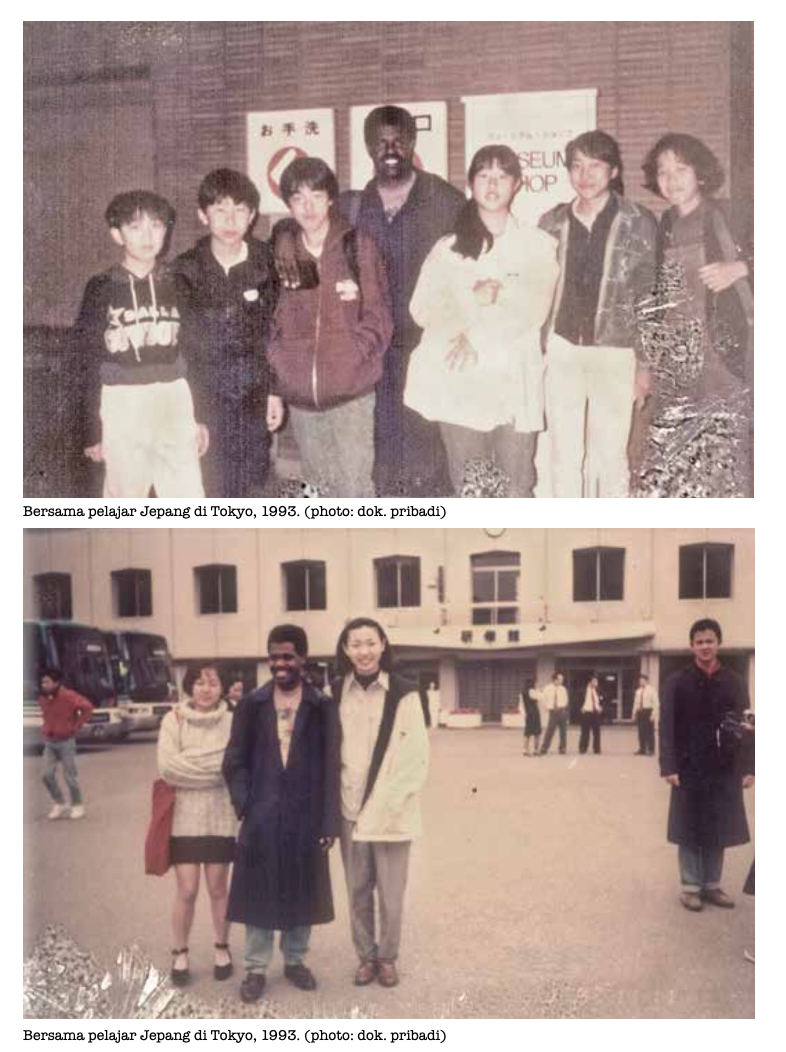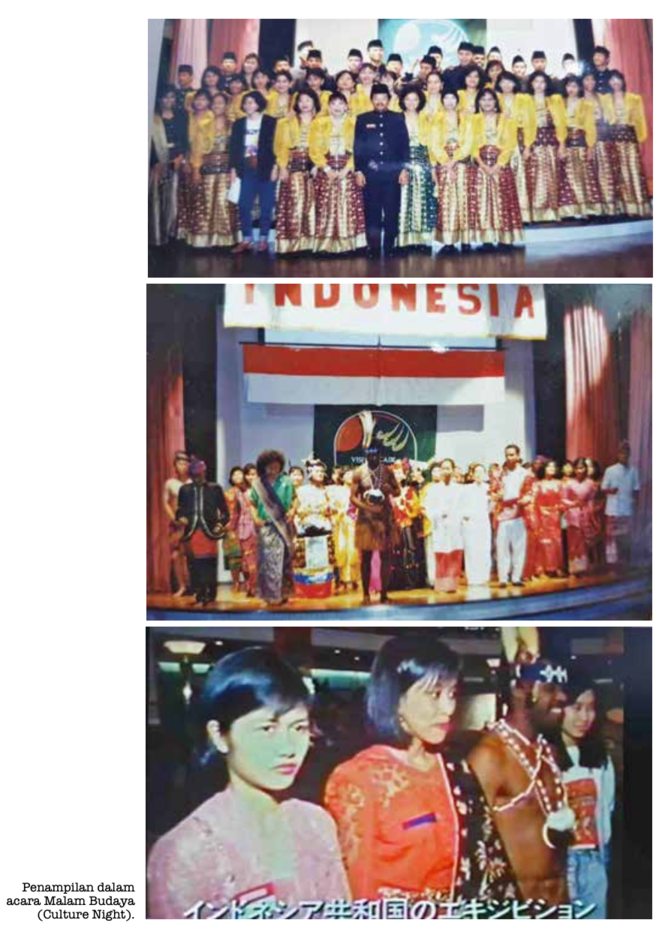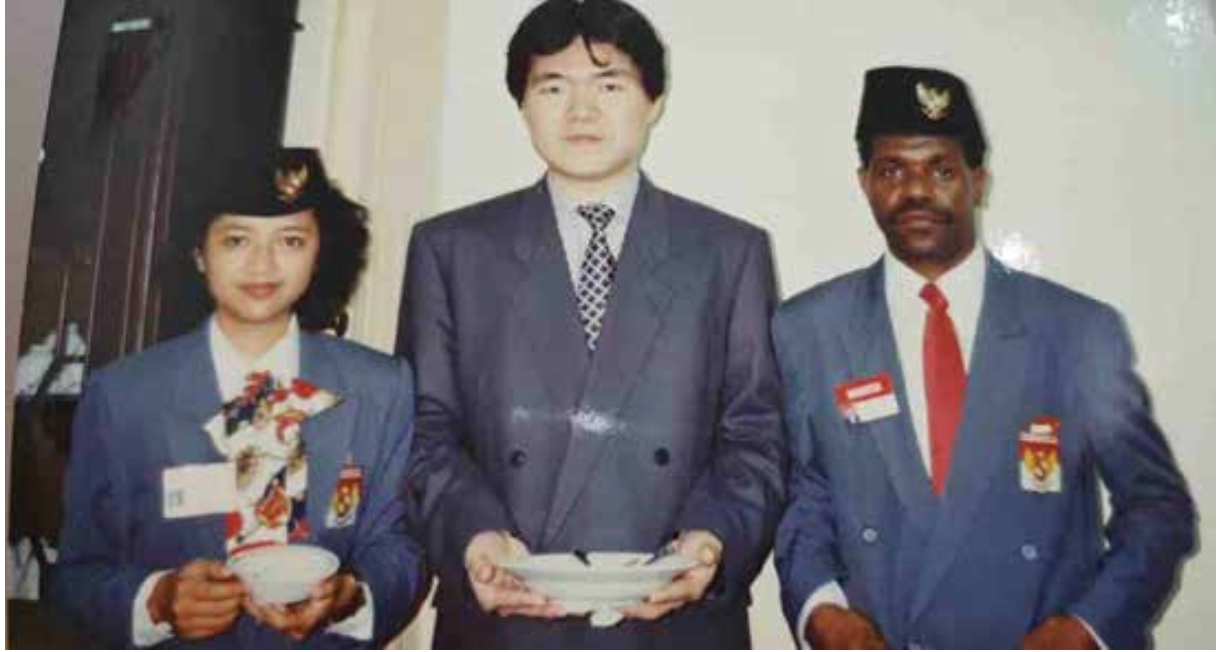Word: Ayu Arman
On October 2, 1993, the cruise ship Nippon Maru docked at Tanjung Priok Port in Jakarta. I was amazed by Nippon Maru, the ship that took me on a journey across ASEAN countries. It was a massive and luxurious vessel—like a five-star hotel gliding on the water.
From Jakarta, the ship sailed to Phuket, Thailand, a two-day journey. We stayed in Phuket for three days before heading to Malaysia, which took another two days. After Malaysia, we arrived in Singapore in a day and stayed there for three days.
In Singapore, I had the chance to visit several places, including the National University of Singapore, the Institute of Technical Education, and experienced a homestay in Kampung Kembangan. Afterward, we headed to Brunei Darussalam, which took two days by sea and stayed there for three days. From Brunei, our journey continued to Japan, where we stayed for a week.

Despite all the luxury food on board, I brought my own sago. While I was eating it, a friend asked, “What kind of sago is that?” I was unsure how to answer—sago is just sago. But since I received it from a friend named Osok, I replied, “This is Osock sago.”
Each country left a different impression. I was most struck by Singapore for its cleanliness and city planning. Japan impressed me with its punctuality and orderliness. But my most memorable experience was in Brunei Darussalam, a small but very wealthy country. I visited the Istana Nurul Iman, home of the Sultan, just a few kilometers from Bandar Seri Begawan.
We also had the opportunity to meet and speak with His Royal Highness Prince Al-Muhtadee Billah, and even had a meal with Sultan Hassanal Bolkiah. After the dialogue, we were taken to the royal garage. I was stunned—hundreds of luxury cars lined up neatly, about 250 luxury car collections from all over the world, including Lamborghini Murcielago LP640, Mercedes Benz SLR McLaren, Ferrari 599 GTB Fiorano, and a Rolls-Royce Silver Spur Limo coated in 24-karat gold.
This journey across six ASEAN countries and Japan expanded my horizons and worldview. I realized that there are many kinds of people living in different parts of the world, with diverse lifestyles, characters, and beliefs.
I learned that Japanese people are generally friendly, punctual, hardworking, and humble. I also noticed that Filipinos resemble the Malay Indonesians in appearance.
More importantly, the journey became a turning point in discovering who I truly am—my identity as a child of Papua.

Many participants from Japan and other ASEAN countries approached me. In several countries we visited, people thought I was from Africa. Common questions included:
“Do you have a family from Africa?”
“No. I’m from Irian Jaya, Indonesia,” I answered.
“How long have you been living in Indonesia?”
“I was born in Indonesia.”
“Were your parents also born in Indonesia?”
I nodded.
I understood why they asked. I stood out physically. Out of 310 participants in the program, I was the only one with dark skin and curly hair, features typically associated with people of African descent.
I explained that Indonesia is a vast archipelagic country made up of two major ethnic groups: Malay and Melanesian. I represent the Melanesian peoples who inhabit the island of Irian Jaya (Papua)—a large island home to 255 indigenous ethnic groups, each with its own language.
This journey across Southeast Asia marked the beginning of my self-discovery and personal transformation. Without realizing it, my attitude and appearance changed after the student exchange program. I became more composed, respectful, and confident.

